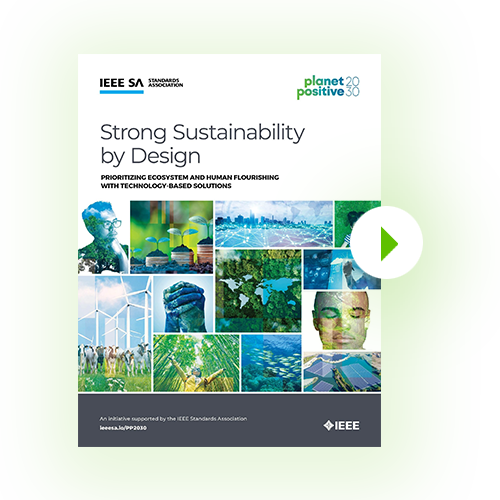The Spatial Web: A Path to Strong Sustainability by Design
By Dr. Sarah Grace Manski, Cyberethicist and Senior Ethical Advisor at the Spatial Web Foundation (https://spatialwebfoundation.org/)
We are interconnected to all life on Earth and our existence is intertwined with the well-being of the planet. The more we expand our technological horizons, the more the ecosystem’s fragility becomes evident. Strong Sustainability, an ethical principle and conceptual framework, calls for an acknowledgement of our inescapable dependence on nature’s capital and the non-negotiable limits to its exploitation.
What is the role of the Spatial Web in achieving Strong Sustainability? And how can it guide us toward an abundance economy?
The Spatial Web is a fusing of the physical and the digital worlds that up until this point have been discrete. Through a shared Spatial Web protocol we are enabling the co-creation of a planetary public space, a global commons, without geographic or national boundaries. Within this space we all have a new medium for expression and imagination made real through a convergence of decentralizing technologies as the world is waking up with ambient intelligence through the increasing presence of autonomous vehicles, robots, and a network of edge computing gadgets and sensors (known as the Internet of Things). By crafting a sophisticated network of interconnected devices, sensors, and human experiences, it represents a paradigm shift in our interaction with the world around us. The Spatial Web transcends mere technological innovation. It nurtures an unprecedented level of awareness and understanding of our planet’s delicate ecosystem. Here’s how:
Monitoring and Preserving Natural Capital: Through real-time monitoring and analytics, the Spatial Web can track changes in biodiversity, climate, and ecosystem health. This data-driven approach enables immediate and informed decisions that can prevent irreversible consumption of natural capital.
Limiting Substitution with Manufactured Capital: Strong Sustainability asserts that natural resources and ecosystem services cannot be fully replaced by artificial means. The Spatial Web fosters informed consumption by illustrating the long-term effects of over-exploitation and promoting conscious utilization of resources.
Inclusive Engagement: By bridging geographical and social barriers, the Spatial Web encourages broad participation in sustainability initiatives. It not only brings stakeholders together but also empowers individuals to act.
Designing with Boundaries in Mind: The Spatial Web supports design thinking that respects the natural laws of the Earth’s ecosystems. It aids in crafting solutions that are not merely economically efficient but also ecologically respectful.
Towards an Abundance Economy: We must go beyond the concept of sustainability. The goal should not merely be to maintain but to thrive. With the Spatial Web’s power, an abundance economy is no longer a utopian idea but an achievable reality.
Let us build a future where technology does not just serve humanity but serves all life on Earth. By embracing Strong Sustainability by Design, we ensure that we leave behind a world where future generations do not merely survive but flourish.
In our quest for this technologically-enabled global regenerative future, let us support initiatives like the PP2030 community. Together, we can shape a future filled with abundance, not scarcity. Your voice matters.
Please support our PP2030 community by downloading SSbD and providing feedback.
About the author: Dr. Manski is the Senior Ethical Advisor to The Spatial Web Foundation (https://spatialwebfoundation.org/) and Co-founder of Bread & Roses DAO. Professor Manski is a widely cited author, speaker at technology conferences globally, advisor to VERSES.ai, affiliate researcher with the P2P Foundation and the George Mason University Center for Social Science Research (CSSR), and Expert Reviewer for the National Science Foundation’s SBIR program.



